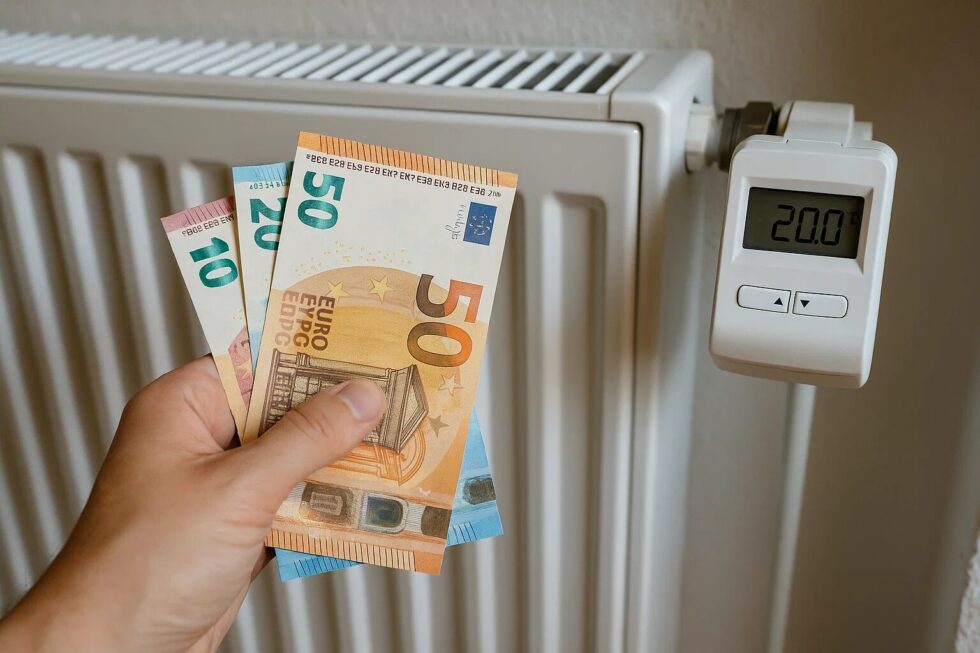How to Save Energy at Home Before the Heating Season? 7 Proven Methods

Energy saving at home in Germany in 2025 is not only a matter of saving money but also a necessity in the face of rising electricity and gas prices. According to the Federal Network Agency, average heating costs have risen by more than 25% over the past two years, while electricity prices remain among the highest in Europe. Preparing your home or apartment before the heating season begins can cut annual expenses by several hundred euros. Proper insulation, mindful heating habits, and control over household appliances are measures that can be implemented without major financial outlays. All the following tips can be applied in both rental apartments and single-family homes. This is reported by G.business.
Before you start: energy check, budget, and safety
Begin with a quick home energy audit: check for drafts around windows and doors, inspect attic insulation (at least 20–30 cm of mineral wool is recommended), and examine thermostatic valves on radiators. Have the last 12 months of your electricity and heating bills on hand to determine your baseline usage (kWh for electricity, kWh or m³ for gas) and compare later. Set a tiered budget: low (up to €50) for sealing and LED swaps, medium (€50–€300) for programmable thermostats or minor insulation works, and investment (€300+) for heat recovery or larger improvements. Prepare essential tools: sealing strips, a radiator bleed key, switched power strips, window insulation film, and if planned, a programmable thermostat. For safety, switch off the circuit before any electrical work and coordinate with building management for central heating systems in apartment buildings.
1. Renew window and door seals before winter
Leaky windows and doors can waste up to 20–25% of heating energy, according to the German Environment Agency. Check all seals before winter and replace worn or damaged ones. Self-adhesive foam or silicone strips start from €5 per roll and can be installed in minutes.
Examples:
- Install sealing strips on the apartment entrance door.
- Apply insulation film to balcony or patio doors.
- Close heavy curtains in the evening.
2. Switch to LED lighting
Lighting accounts for an average of 10–12% of electricity use in German households. Replacing halogen or incandescent bulbs with LEDs can cut consumption by up to 80%. Choose LEDs with energy class A or better and a color temperature suited to the room’s purpose.
Advantages of LEDs:
- Lower energy consumption (e.g., 8 W instead of 60 W).
- Long lifespan (up to 25,000 hours).
- Less heat output.
3. Install programmable thermostats
Programmable thermostats allow temperature adjustments based on time of day, reducing heating energy use by 10–15%. Example: lowering the temperature at night from 21°C to 18°C can save €150–€250 per year in a single-family home. Smart models can be controlled via an app.
Settings:
- 21°C during the day, 18°C at night.
- Eco mode during long absences.
4. Completely switch off devices in standby mode
Electronics in standby mode can cost up to €100 extra per year, according to the German Consumer Advice Center. Switched power strips, starting at €10, allow you to cut off power to multiple devices at once.
5. Use heat recovery
Heat recovery systems require a larger investment but can reduce heating costs by up to 40–50% in the long run. These systems capture warmth from outgoing air and transfer it to incoming fresh air. Compact units for apartments start at around €300 and can be installed without major renovations.
6. Regularly bleed radiators
Air trapped in the heating system can reduce radiator efficiency by up to 30%. Before the season, bleed all radiators to improve heat circulation and heat rooms faster. In apartment blocks with central heating, coordinate with building management; in houses, a simple radiator key costing a few euros will suffice.
7. Choose energy-efficient appliances
When buying new appliances, opt for energy class A or higher. A class A washing machine uses about 30% less energy than a class D model, saving up to €80–€100 per year. Higher-class appliances also use less water, which further reduces heating costs.
Estimated annual savings in Germany
| Action | Estimated annual savings (€) |
|---|---|
| Switch to LEDs | 60–100 |
| Install a programmable thermostat | 150–250 |
| Seal windows and doors | 80–150 |
| Turn off devices in standby mode | 50–100 |
| Bleed radiators | 20–50 |
Preparing your home before the heating season in Germany doesn’t require complicated work or large investments. Implementing simple measures — sealing windows, switching to LEDs, installing programmable thermostats — can deliver tangible savings from the first month. Over time, these actions reduce costs and CO₂ emissions, contributing to environmental protection. Conscious energy management is becoming the standard in German homes, and starting early ensures comfort and lower bills throughout the winter.
Stay connected for news that works — timely, factual, and free from opinion — and insights that matter now: How to Save Electricity in Germany: Practical Tips and Hacks